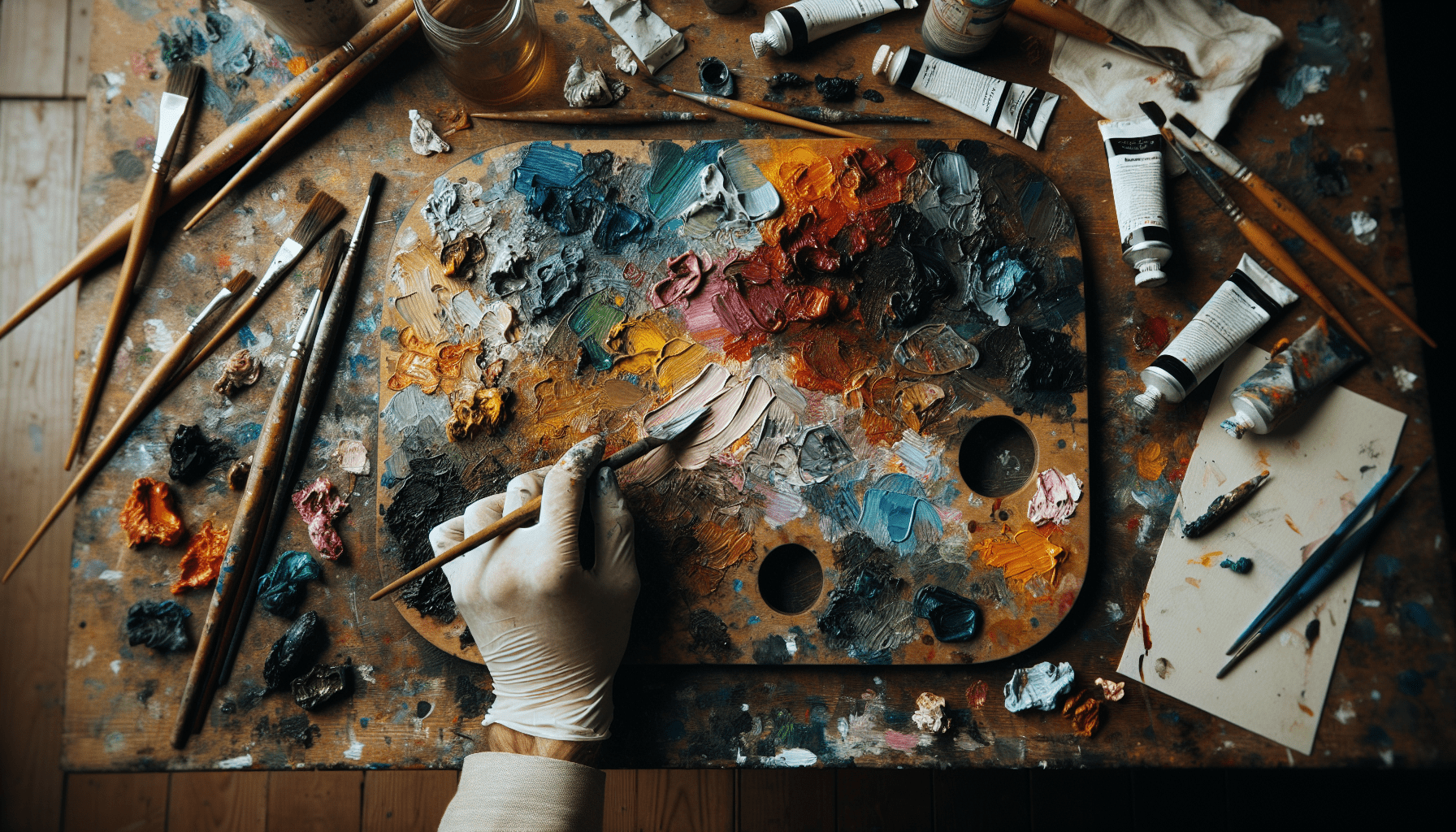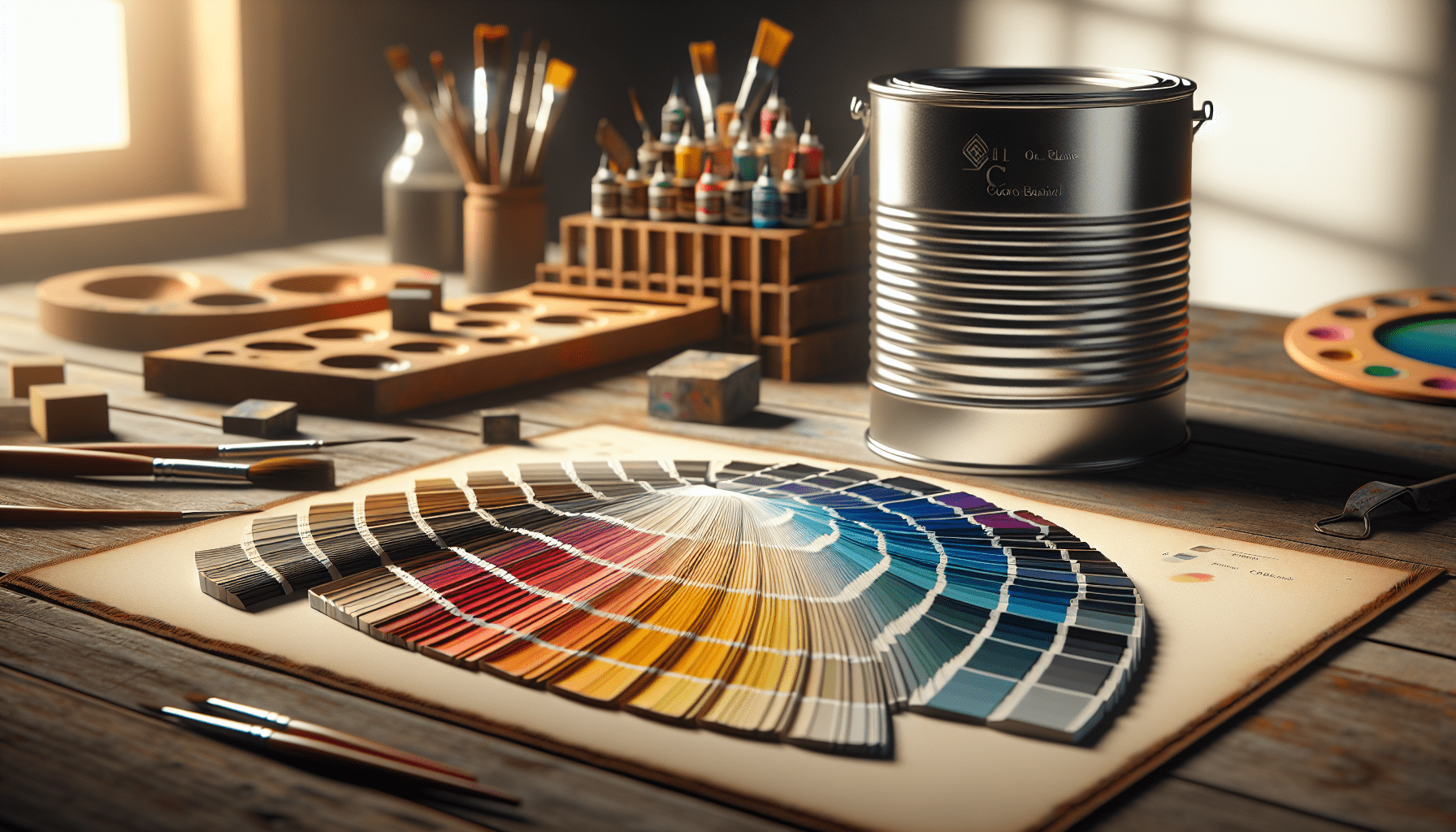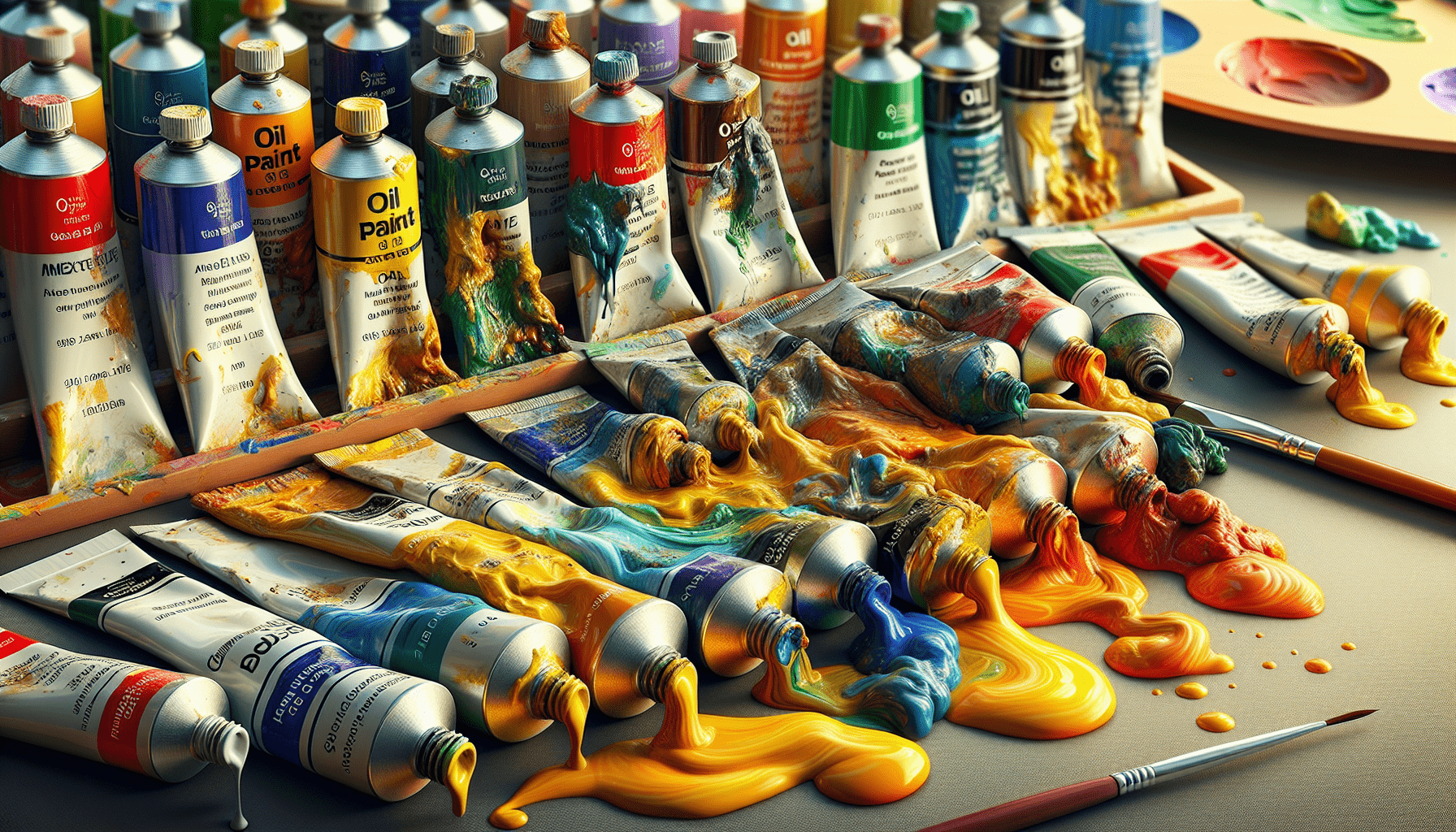Efficiently maintaining your oil painting palette is crucial to preserving the quality and longevity of your materials. In “How To Clean Oil Painting Palette,” you will gain invaluable insights into the essential steps and techniques needed to keep your palette in pristine condition. This guide will walk you through practical, easy-to-follow methods to remove paint residue, prevent contamination, and ensure your palette remains ready for future artistic endeavors. Whether you are a seasoned artist or a novice, this article will equip you with the knowledge to maintain a clean and functional workspace. Have you ever wondered how to properly clean your oil painting palette? While the creative process of painting with oils can be immensely fulfilling, the post-painting cleanup can often feel like a daunting task. Maintaining a clean palette not only helps preserve the life of your tools but also ensures the purity of your colors for future projects. This comprehensive guide will walk you through everything you need to know about effectively cleaning your oil painting palette.
Understanding the Importance of Cleaning Your Palette
Cleaning your oil painting palette is not merely an issue of aesthetics. It plays a significant role in maintaining the quality of your artwork and the longevity of your painting tools. A well-maintained palette offers a range of benefits:
- Color Integrity: Residual paint can mix with fresh colors, leading to unintended hues.
- Tool Preservation: Prevents buildup that can damage your brushes and palette knives.
- Health and Safety: Regular cleaning reduces the risk of exposure to potentially harmful substances.
The Consequences of Not Cleaning Your Palette
Neglecting your palette can result in several issues. Old, dried paint can mix with your new mixtures, disrupting the desired color consistency. Over time, the quality of your tools might degrade, leading to more frequent replacements. Additionally, improper cleanup might expose you to harmful chemicals present in the paints and solvents.
Types of Palettes and Their Cleaning Requirements
Different types of palettes require different cleaning methods. This section will help you understand how to approach cleaning whether you use a wooden, glass, or disposable palette.
Wooden Palettes
Wooden palettes are traditional yet require more care due to their porous nature. If not cleaned promptly, oil paint can seep into the wood, making removal difficult.
- Immediate Cleaning:
- Use a palette knife to scrape off excess paint.
- Wipe down the palette with a soft, lint-free cloth.
- Apply a small amount of solvent like turpentine to remove residual paint.
- Deep Cleaning:
- Rub the surface with a cloth soaked in linseed oil. This helps to condition the wood as well.
- Sand the surface lightly if paint has been absorbed over time.
Glass Palettes
Glass palettes are non-porous and easier to clean. They don’t stain and allow for thorough removal of paint.
- Immediate Cleaning:
- Scrape off excess paint using a razor blade or palette knife.
- Wipe down with a solvent-soaked cloth.
- Deep Cleaning:
- Use a glass cleaner to give the palette a final polish, ensuring it’s entirely free of residual paint and solvent.
Disposable Palettes
Disposable palettes offer convenience, as cleaning is practically non-existent. Simply discard the used sheet when you’re done.
- Immediate Cleaning:
- Peel off the top layer and throw it away.
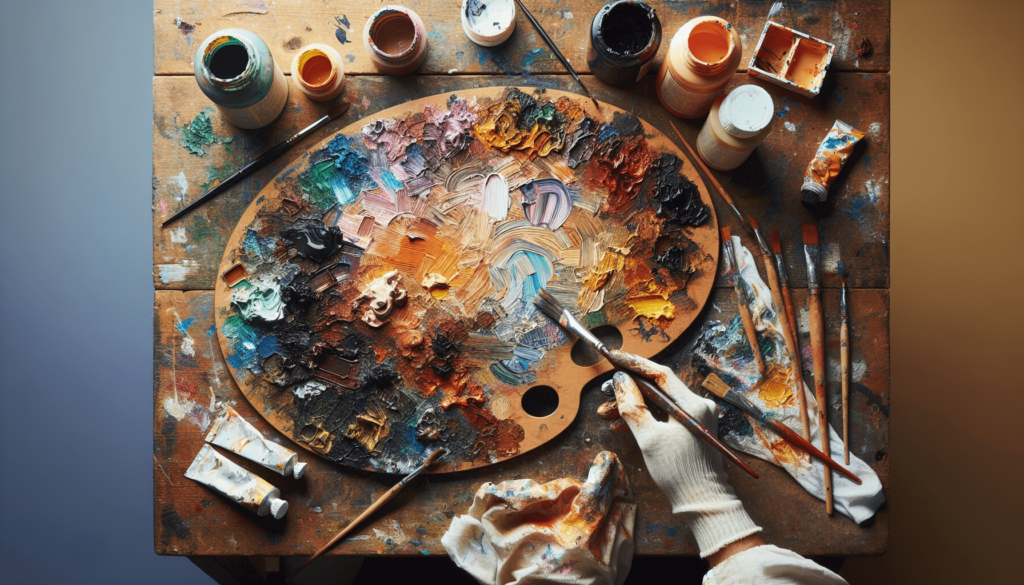
Step-by-Step Guide to Cleaning Your Oil Painting Palette
Let us delve into the step-by-step process to effectively clean your palette, taking into consideration the materials involved.
Essential Cleaning Tools and Materials
Before starting the cleaning process, gather these tools:
| Tool/Material | Purpose |
|---|---|
| Palette Knife | Scraping off excess paint |
| Soft Cloth | Wiping down paint and solvent |
| Solvents (Turpentine, Mineral Spirits) | Dissolving residual paint |
| Linseed Oil | Conditioning wooden palettes |
| Razor Blade | Scraping glass palettes |
| Sandpaper | For deep cleaning wooden palettes |
| Gloves | Protecting hands from solvents |
Immediate Cleaning Process
Immediate cleaning is crucial to maintain your palette in good condition. Here’s how you can do it:
- Scraping Off Paint:
- Use your palette knife to remove as much paint as possible. Hold the blade at an angle and gently push it across the palette surface to collect the paint.
- Wiping Down:
- Take a soft cloth and wipe off the remaining paint.
- Using Solvents:
- Apply a small amount of solvent to another cloth and rub it over the surface. Be mindful of the type of solvent appropriate for your palette material.
- Final Wipe:
- Use a clean cloth to give the palette a final wipe, ensuring no solvent residue is left.
Deep Cleaning Process
For thorough maintenance, a deep cleaning session is advisable periodically.
- Wooden Palettes:
- After scraping and wiping, use linseed oil to clean and condition the wood.
- If needed, lightly sand the surface to remove any stubborn paint marks.
- Glass Palettes:
- After the basic scrape and wipe, use a glass cleaner for a pristine finish.
- Disposable Palettes:
- Simply discard the used layer and continue painting on a fresh sheet.
Best Practices for Long-Term Maintenance
Regular maintenance can extend the life of your palette and ensure more enjoyable painting sessions.
Setting Up a Cleaning Routine
Establishing a regular cleaning routine can make palette maintenance less of a chore. Ideally, clean your palette:
- Immediately After Each Painting Session: Ensures paint does not dry and become difficult to remove.
- Weekly Deep Clean: For palettes frequently used, a weekly deep clean can prevent buildup.
Proper Storage Techniques
Proper storage is vital to maintaining your palette in good condition.
- Wooden Palettes: Store in a dry environment to prevent warping.
- Glass Palettes: Keep in a safe place to avoid chipping or cracking.
- Disposable Palettes: Store in a flat, dry area to keep sheets from sticking together or tearing.
Safety Measures
Handling solvents and paints requires attention to safety:
- Ventilation: Always work in a well-ventilated area to avoid inhaling fumes.
- Gloves: Wear protective gloves when handling solvents.
- Disposal: Follow local guidelines for disposing of used solvents and paint residues.
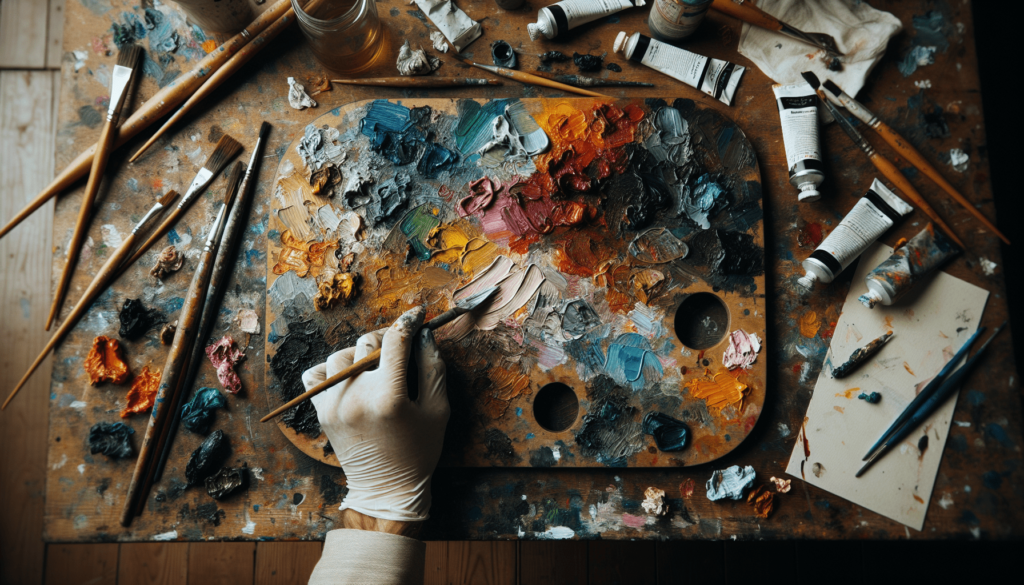
Choosing the Right Solvents
Not all solvents are created equal; choosing the right one depends on your specific needs and palette type.
Types of Solvents
Each solvent has its pros and cons, particularly in relation to its cleaning properties and safety considerations.
| Solvent | Pros | Cons |
|---|---|---|
| Turpentine | Strong, effective | Strong odor, high toxicity |
| Mineral Spirits | Less odor, effective | Still toxic, not as strong as turpentine |
| Linseed Oil | Natural conditioner for wood | Less effective at removing dried paint |
| Eco-Friendly Solvents | Safer for health and environment | Can be less effective, more expensive |
Using Solvents Safely
While solvents are effective, they pose certain health and safety risks:
- Avoid Direct Contact: Use gloves to protect your skin.
- Proper Ventilation: Ensure your workspace is well-ventilated to avoid inhaling fumes.
- Storage: Keep solvents in tightly sealed containers, away from children and pets.
Common Mistakes to Avoid
While cleaning your oil painting palette can seem straightforward, there are common pitfalls to avoid.
Using Excess Solvent
Using too much solvent can not only damage your palette but also be harmful to your health. Use a minimal amount sufficient to clean the surface.
Skipping Immediate Cleaning
Allowing paint to dry makes it much harder to remove. Always tackle the cleaning process immediately after painting.
Neglecting Safety Measures
Avoid shortcuts that compromise safety. Always wear gloves and ensure proper ventilation.
Frequently Asked Questions
Here are answers to some common questions you may have about cleaning your oil painting palette.
Can I Use Household Cleaners?
Household cleaners are generally not recommended, as they can damage your palette and are not designed to break down oil paints.
How Often Should I Deep Clean My Palette?
It depends on usage, but a good rule of thumb is to perform a deep clean once a week if you paint regularly.
Is It Safe to Use Solvents Indoors?
Yes, but always ensure adequate ventilation. Open windows and use fans to disperse fumes.
Can I Clean Dried Paint from a Wooden Palette?
Yes, but it may require sanding and conditioning with linseed oil to fully restore the palette.
Conclusion
Cleaning your oil painting palette is an integral aspect of your artistic routine that ensures the longevity of your tools and the quality of your artwork. By following these detailed guidelines, you can maintain a pristine palette that keeps your colors true and your creativity flowing.
By integrating immediate and deep cleaning practices, choosing the right solvents, and avoiding common mistakes, you can make the cleaning process seamless and efficient. Proper maintenance not only enhances your painting experience but also contributes to lasting health and safety in your creative endeavors.
Take the time to care for your palette, and it will serve you well through countless masterpieces.
